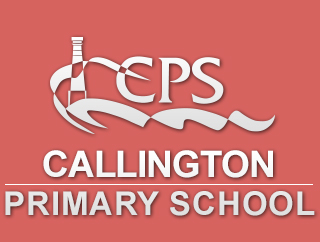At Callington Primary, we believe every child can learn to read, no matter their background, needs, or abilities. We want all our children to become confident, fluent readers who love getting lost in a good book! They will be exposed to a variery of stories, poems, rhymes, and fascinating non-fiction to help them grow their vocabulary, understand language, and spark a genuine passion for reading.
We're here to inspire a lifelong love of reading. When children can read with confidence and understand what they're reading, they gain the "will to read" and unlock the ability to "read to learn."
Reading truly is at the heart of everything we do at Callington. It underpins every subject, helping children gain rich knowledge across the curriculum. By offering a wide variety of books, we aim to broaden their minds and experiences, helping them understand the world around them and develop their cultural understanding.
Because reading is such an important life skill, we're dedicated to helping our children become independent readers. This means they can easily process information, fully engage in all their learning, and be well-prepared for the exciting next steps in their education.
By the end of Year 2 (Key Stage 1), children will be confident in sounding out words. By the time they leave us at age 11, we want our children to be able to:
- Read with confidence, fluency, and a good understanding, using different strategies to help themselves if they get stuck.
- Enjoy a wide range of reading materials and choose to read for fun and pleasure.
- Read confidently to find information.
- Develop a rich vocabulary and understand how language works.
- Meet, and ideally exceed, age-related expectations for reading.
How will children be taught to read?
We start teaching phonics to children in our Reeption class right from the start of the year. Phonics is all about learning how to 'read' the sounds in words and how those sounds can be written down. This is absolutely key for reading and it's a huge help with spelling too. We teach the children simple and fun ways to remember these sounds and letters, and we often suggest you ask them to show you what they've learned – they love to share!
The children also get to practise reading (and spelling) what we call 'tricky words', which are words like 'one,' 'have,' 'said,' and 'where' that don't quite follow the usual phonics rules.
As they learn, the children practise their reading with books that are carefully chosen to match the phonics and 'tricky words' they already know. This quickly helps them to feel like real readers, which does wonders for their confidence!
Our teachers also read a wide variety of books to the children, including those that show diverse characters and cultures. This helps them discover all sorts of wonderful stories, poems, and information books. They pick up lots of new words this way, and it's a fantastic boost for their writing skills too!
- help your child blend sounds into words,
- read the blending books,
- read Red, Green and Purple story books
Helping at home
- Set 2 and Set 3 sounds,
- Pink, Orange, Yellow, Blue and Grey Storybooks.

